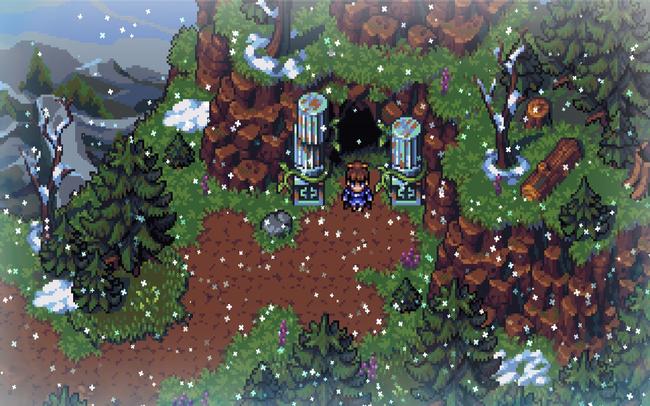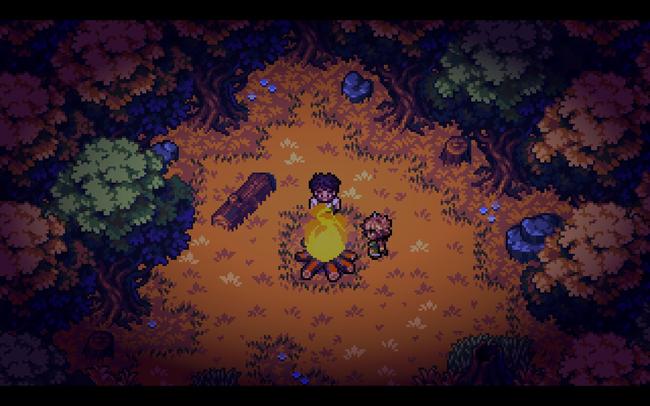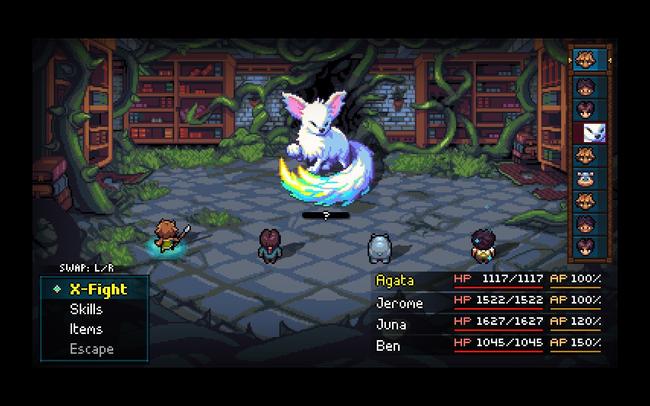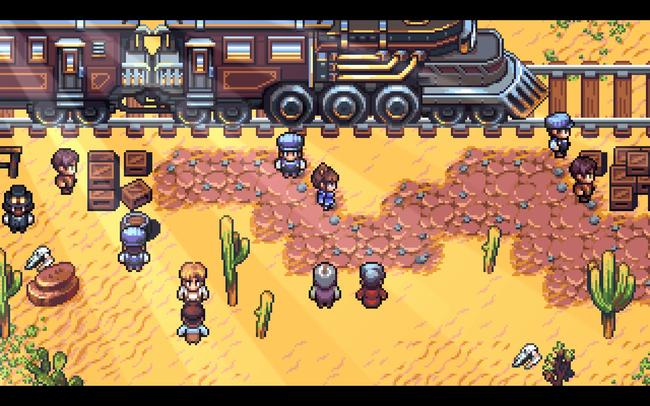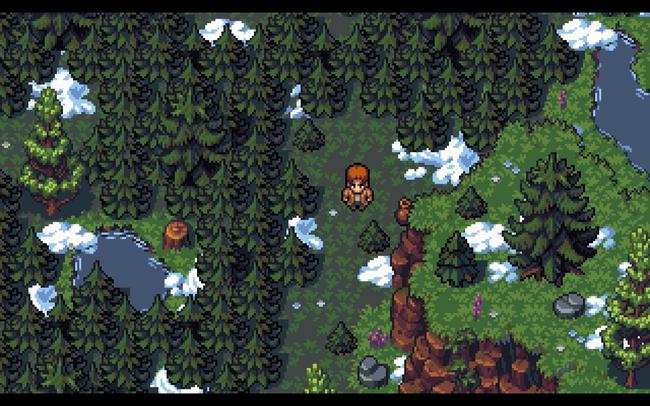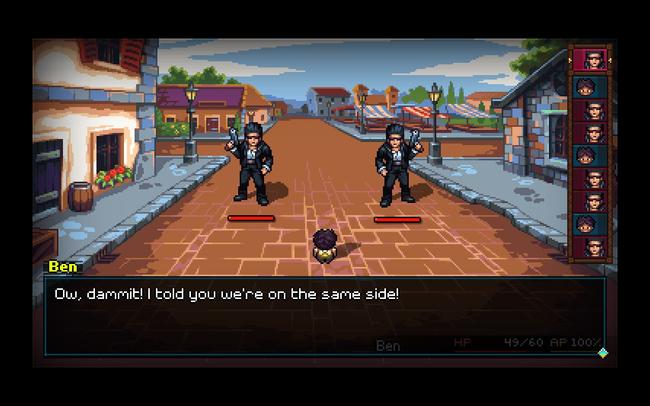
Console role-playing games, or RPGs, have had their share of highs and lows since the 1980s. The genre first became popular in Japan with games like Dragon Quest and Final Fantasy on the Nintendo Entertainment System. However, it took until the release of Final Fantasy VII in 1997 to achieve widespread global success. Even before that breakthrough, titles such as Phantasy Star IV, Chrono Trigger, and Final Fantasy VI were beloved by a dedicated fanbase for their epic stories, detailed character stats, and memorable characters.
The children who grew up playing classic RPGs are now creating their own games. We’ve recently seen a surge in new RPGs that intentionally recapture the feel of those older titles. Games like Sea of Stars, Chained Echoes, and Eiyuden Chronicle: Hundred Heroes use retro pixel art and turn-based combat, building expansive and vibrant worlds reminiscent of the 16- and 32-bit era. They also update the formula with modern technology and design principles to create a fresh experience.
Something Classic’s new RPG, Quartet, is a beautifully pixelated game that aims high, especially considering the quality of other RPGs available today. When you start a new game, you can choose between four different heroes, each with their own unique story. As you play through each character’s chapter, their paths begin to cross, ultimately revealing a surprising truth about the world and launching a grand, epic adventure.
So, how does it stack up against the games that inspired it and other retro-style RPGs? Is it a future classic? It’s not a simple answer.
“Final Fantasy VI for people with a job”
When I interviewed Patrick Holleman, the designer and writer of Quartet, for my 2022 book, “Fight, Magic, Items,” he explained their goal: to create a game like Final Fantasy VI, but designed for people with busy lives. Final Fantasy VI was the RPG that first captivated me as a child, and my friends and I would spend countless hours exploring everything it had to offer. So, the idea of a new game with that same feel, created by someone who clearly understands RPGs like Holleman, was incredibly appealing. As a millennial parent juggling work, family, and limited free time, I especially appreciated his focus on making the game accessible for players with busy schedules.
Creating a sequel to a classic like Final Fantasy VI is a huge challenge. It needs to honor what fans loved about the original game while also appealing to them as players today. To do that, it’s crucial to first understand why Final Fantasy VI was so special. Made in under a year by a talented team at Square, the game stood out by focusing on a group of heroes rather than a single one. A diverse cast of rebels, united by a common goal, replaced the traditional lone protagonist. While players might debate who the ‘main’ character is—Terra or Celes—the game gave everyone a unique experience. It wasn’t about finding the ‘right’ way to play; you could build your party, interpret the story, and approach challenges however you liked. Even the later part of the game, a sprawling open-world section called The World of Ruin, offered complete freedom – there were no wrong choices in building your team or tackling the adventure.
There was only your way.
Quartet begins by letting you choose one of four characters, who are initially presented only briefly as they relax on a detailed miniature scene. You’ll eventually play as all of them, and the order you choose doesn’t affect the overall story. This approach is reminiscent of classic PlayStation games like Wild Arms and Suikoden III, suggesting a narrative that connects and builds upon itself. The early parts of the game focus on each character individually, but like Final Fantasy VI, none of them feel like a traditional hero. Instead, each section is a self-contained, character-driven story.
Ben, a chef who’s both laid-back and critical of himself, goes on a funny journey to figure out who he is. Meanwhile, Nikolai, a strict soldier, starts to doubt his part in a growing war. Cordelia leaves her quiet academic life to hunt for answers, and tech-savvy Alexandra struggles to understand her mother’s strange sickness. Each character has well-defined goals and problems, and their stories come together in a rewarding, though slightly delayed, twist and conclusion in Quartet.
While each main character is paired with a supporting ally, forming a group of eight, these companions—Juna the hippo, Agata the warrior, the automaton Zikaron, and the remarkably ordinary Jerome—lack the compelling depth and internal struggles of the protagonists. Their backstories are explored later in the game, but it feels too late, and I wished I’d learned about them earlier. Similar to some secondary characters in Final Fantasy VI, not everyone can be a central figure like Terra or Celes, but I immediately understood Relm’s motivations when she joined, and how they connected to her grandfather Strago. I also quickly grasped Gau’s issues, Setzer’s pain, and the mystery of Shadow’s past. Despite having almost half as many playable characters, Quartet sometimes felt limited by its structure. It would have been better to focus on developing those characters more fully, rather than trying to match the broad scope of Final Fantasy VI, which was constrained by its development time.
Overall, Quartet tells a satisfying story with nods to classic games like Lufia: Rise of the Sinistrals and Chrono Cross (I won’t spoil how!). The game’s strength lies in its group of characters, even if some individual personalities aren’t fully developed. However, I sometimes wished the different storylines felt more naturally connected. Instead, the game relies on a big twist in the final act to change how you explore the world, the game’s structure, and its overall pace.
Holleman’s sales pitch really hits home when you consider how our lives change as we get older. When I was a kid playing Final Fantasy VI, I had all the time in the world – unless school, bedtime, or swimming lessons got in the way. But now, as an adult juggling a career, family, and other responsibilities, time is the biggest obstacle to enjoying video games. Modern save features are a lifesaver, and the team at Something Classic understands this. The games we loved as kids were designed for free time, but today’s games have to compete with everything else – bills, kids’ activities, and even just making dinner.
Quartet is designed to be played in short bursts, fitting into busy lives much like quick meals eaten while juggling other tasks. This is immediately apparent in how the game starts with several short, independent stories that eventually connect. It also uses quests meant to be finished in around 30-45 minutes, providing a quick sense of accomplishment. While this approach works well for keeping things moving on a small scale – dungeons don’t feel drawn out, and the story progresses rapidly – it can make the overall experience feel a bit slow and cumbersome when looking at the bigger picture.
Okay, so I jumped into the first scenario and was immediately hooked! It’s a really quick, engaging way to meet the main character and understand what they’re up against. I got to go on a mini-adventure and solve a mystery, which was fun, but it also set up a bunch of other mysteries! Honestly, it was a perfect little introduction – I instantly cared about the characters and wanted to know what would happen next. But then, just as things were really getting good, right when the story was building momentum, it sent me back to the character selection screen to choose the next part. It’s a bit jarring, honestly!
The game’s choppy rhythm creates frustrating pauses at the end of each chapter. You become invested in the story and characters after a few hours, only to be reset to the beginning with a slower pace. While Octopath Traveler had a similar problem, it let you choose which storyline to pursue, giving you control over how the narrative unfolded. In contrast, Quartet feels like hitting a dead end. It takes about 12 hours to unite your full team and finally get to the main conflict and villains. That’s a significant amount of time, especially considering the game is only around 20 hours long. What makes it even more frustrating is that the most engaging character development – particularly for the supporting characters – is hidden in optional content.
A key strength of Final Fantasy VI is its fast-paced storytelling, constantly teasing the next major plot point. It avoids repeating familiar structures, instead offering diverse experiences – from quiet, personal moments like Cyan’s journey on the Ghost Train, to comedic adventures like Sabin’s infiltration, and stealth-focused missions like Locke’s return to Narshe. Importantly, each story begins at a critical moment, ensuring a seamless flow of momentum and reinforcing the idea that these individual conflicts contribute to a larger narrative. This approach differs from a game like Live A Live, which presents self-contained character stories before unexpectedly tying them together. Quartet, unfortunately, tries to do both – offering choices early on but relying on a late-stage connection of narratives to feel satisfying, ultimately not fully committing to either strategy.
As Holleman put it, JRPGs often require a lot of trade-offs, and it’s tough to find the right balance between making a game easy to pick up and offering a truly expansive experience, especially when people compare it to beloved classics. With Quartet, the developers didn’t try to make a huge, sprawling game. Instead, they focused on packing as much detail and content as possible into a smaller package, and for the most part, it works – even if it didn’t quite become the next Final Fantasy VI I was hoping for.
Building a new world, one pixel at a time
A successful fantasy world, like the one in Quartet, needs to quickly make players invested by dropping them into a place they’ll want to defend. Final Fantasy VII achieves this through a vivid setting and the compelling motivations of the AVALANCHE group. 1000xResist draws players in by letting them uncover the story of a changed world through recognizable elements. In contrast, I believe Final Fantasy X falters with an overblown opening that relies on superficial visuals. It presents a world players don’t get to truly explore and introduces mysteries that would have been more effective if revealed gradually. The game also forces players through a lengthy, confusing tutorial before the story properly begins in the waters near Besaid.
Quartet draws you in with characters you immediately connect with and a compelling central mystery. But it truly shines through its beautiful and varied visual style, detailed pixel art, and impressive soundtrack. The game’s environments are particularly noteworthy, ranging from lively cities and gloomy caves to dense jungles and murky swamps, and from industrial factories to peaceful villages. Cities feel vast and full of life, brimming with small details, while villages offer a more relaxed pace without sacrificing detail. The dungeons are cleverly designed and fun to explore, offering intricate layouts without feeling confusing or overwhelming. It’s clear the developers understand and embrace the potential of pixel art, consistently challenging their artists to create something special.
While the main characters look great, many of the supporting characters are forgettable and blend together, especially compared to iconic sprites from games like Final Fantasy VI or Secret of Mana. I could easily picture characters like Vargas or Gemma, but struggled to recall who Jerome or Corsin were even after playing for a long time. This became a problem because the story jumps around a lot and involves many different plotlines, making it hard to keep track of who was who. The game’s pixel art looks good for backgrounds, but the character sprites are large without enough detail. They feel blurry and undefined compared to similar games like Chained Echoes, Eastward, or CrossCode, and the lack of options for scanlines makes this even more noticeable.
But, hey, there’s a playable hippo with magic, so that’s gotta count for something, right?
It’s a Team Game
Recently, a lot of RPGs have tried to recapture the feeling of older games. Some, like Chained Echoes, have been truly original, while others, such as Sea of Stars and Eiyuden Chronicle, have played it safe with familiar gameplay. Quartet falls somewhere in between – it’s inspired by classic turn-based RPGs like Final Fantasy X, but also introduces unique character roles and skills, helping it stand out.
After you gather your full team – though you’ll meet some helpers along the way – you’ll have eight fighters available. Four will be in the front lines, actively battling and using skills, while the other four support from the back, recovering health or avoiding attacks. You can switch characters whenever you want, giving you access to all their abilities. A useful tactic is to quickly swap a slow character for a fast one, letting you use a powerful skill immediately without delay.
Many classic console RPGs create challenge by making you carefully manage your supplies. The further you venture from town or deeper into a dungeon, the fewer spell points, healing potions, and other useful items you’ll have. It’s up to you to conserve these resources so you’re prepared for difficult boss battles.
Unlike many RPGs, Quartet doesn’t limit how often you can use powerful abilities. Instead, it encourages strategic skill use with an energy system – called EP – that refills each turn. You’re rewarded for actively using abilities, and even defending smartly boosts your EP and temporarily strengthens your characters. This makes combat feel more like solving a puzzle than just repeatedly pressing buttons, as you can always access your full range of options without worrying about conserving resources.
I eventually settled on a core team of characters – similar to a baseball team’s regular pitching lineup – but I appreciated all eight of them, even when their individual stories didn’t fully grab me. Once you start experimenting with how their abilities work together, or strategically changing the order they take turns, the game becomes incredibly satisfying – as good as, or even better than, other games with similar combat systems.
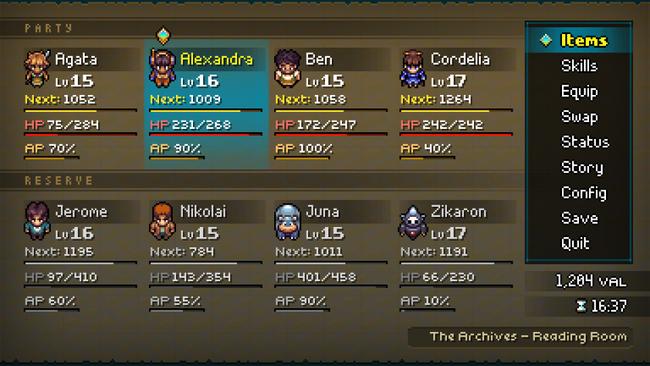
Retro Revival
With so many new RPGs trying to recapture the magic of older games, developers like Something Classic face a tough challenge: honoring our childhood memories while also creating something that feels fresh. A lot of my issues with Quartet come down to the high expectations set by the developers themselves. Even though the game’s story and flow aren’t perfect, I enjoyed my 25 hours with it. It’s a solid addition to the growing retro RPG scene, though it’s probably more on par with games like Eiyuden Chronicle than the top-tier titles like Sea of Stars and Chained Echoes. Quartet clearly understands what made classic 16- and 32-bit RPGs great, and it successfully builds on those strengths while smoothing out some of the frustrating parts. The fun combat and beautiful scenery kept me engaged, even when the story felt a little overambitious.
Following their promising start with Shadows of Adam in 2017, Quartet demonstrates that Something Classic has matured and gained confidence. While it may not reach the level of the games that inspired it, Quartet stands out among similar retro-style RPGs thanks to its lively music, beautiful worlds, and rewarding combat. It might not be a classic itself, but it’s definitely worth playing, particularly if you enjoy console RPGs from the mid-1990s.
8
Versions tested: PC
Read More
- Zerowake GATES : BL RPG Tier List (November 2025)
- Super Animal Royale: All Mole Transportation Network Locations Guide
- Hazbin Hotel Voice Cast & Character Guide
- How Many Episodes Are in Hazbin Hotel Season 2 & When Do They Come Out?
- T1 beat KT Rolster to claim third straight League of Legends World Championship
- Where Winds Meet: March of the Dead Walkthrough
- Terminull Brigade X Evangelion Collaboration Reveal Trailer | TGS 2025
- What time is It: Welcome to Derry Episode 3 out?
- ‘Now You See Me: Now You Don’t’ Ending, Explained
- 5 Years Later, I’m Still Mad About This Christmas Movie’s Ending
2025-11-21 07:59

